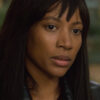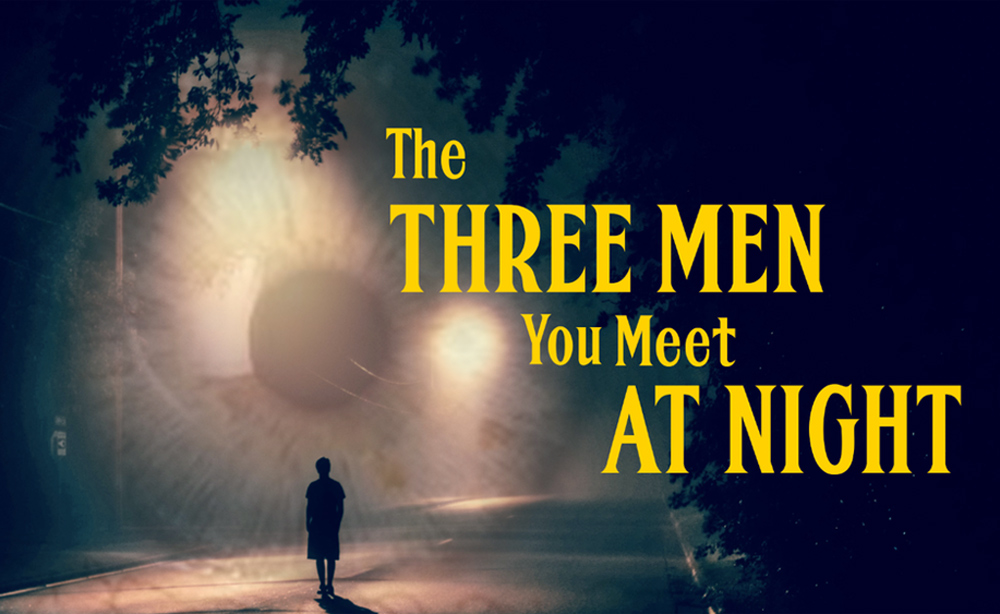Like nearly everyone who checked into the Overlook Hotel, Beck Kitsis found her mind turned inside out by the experience.
“‘The Shining’ is one of my favorite horror films,” Kitsis recently told me in an e-mail. “On the surface, it’s a haunted house film. Look closer though, and you’ll find a film about a man who resents his wife and son for robbing him of his manhood and freedom, and thus ruining his life. The scariest films are those that pervert our reality by amplifying real-life anxieties — those that show us how our friends, family, partners, and protectors all have the potential to become monsters, too.”
It is with the knowledge of how to identify the Jack Torrances that Kitsis is approaching “The Three Men You Meet at Night,” a short that is currently raising funds on Kickstarter before a September 19th deadline. After producing the Sundance sensation “The Rat,” which ingeniously subverted the concept of a haunted house into reflecting a chilling everyday reality for women, Kitsis is seizing the director’s chair for the first time to put a new spin on the slasher movie with the story of a 16-year-old named Jess, a junior in high school who encounters a trio of trouble on her walk home from a party past the witching hour. There are twists and turns on Jess’ path home that she’s never seen before when familiar faces such as a local cop and a close friend seemingly take on a different persona after midnight and Kitsis promises to take audiences where they’ve never been before either with the thriller, flipping the script when it comes to expectations that have been set up in genre films by generations of male filmmakers for women to simply play the victim.
While she brings a world of experience to her directorial debut, Kitsis is turning towards the crowd to help bring “The Three Men You Meet at Night” into the world at the scale it deserves and amongst a bevy of nifty rewards she has put up for grabs on Kickstarter (from makeovers to tailored playlists), the most exciting one is unstated — the opportunity to invest in an exciting new filmmaker who appears poised to pay artistic dividends for years to come. With the crowdsourcing campaign in full force, Kitsis was kind enough to answer a few questions about the project.
Have you been wanting to direct for a while?
I’ve wanted to direct films for over a decade, but I never felt confident enough to make my dreams known. Instead, I had the pleasure of working as a writer and producer, helping to bring my collaborators’ dreams to life, and learning a hell of a lot about directing along the way. Now, after ten years of producing short films and feature-length documentaries, I’m excited to finally pivot into directing.
Over the past three years, I’ve been co-writing and producing a feature-length horror film about a young girl’s coming of age entitled “Strawberry Summer,” co-written and soon to be directed by my frequent collaborator and dear friend Carlen May-Mann. In writing “Strawberry Summer,” I kept trying to find a scene to explore the fear women feel walking home alone at night. However, I soon realized that this harrowing journey deserved more than just a single scene — it needed its own distinct film, and that’s where the idea for “The Three Men You Meet at Night” was born.
What was the inspiration for the story?
When I was 11 years old, I used to walk home alone at night after hanging out in town with my friends. By age 12, each time I took this walk, men would catcall me from their cars. At first, I found this new attention exhilarating — finally, I was being treated like a grown-up, like someone special. I had this new power over adult men, and I reveled in it. But I soon realized that it wasn’t a power I could control, and at times it became altogether frightening, like when men would follow alongside me in their cars, refusing to leave.
The fear we experience as women walking alone at night is universal and often genuinely horrific. However, I rarely see these stories depicted onscreen for any purpose other than entertainment or exploitation. Coming of age in the ‘90s and early aughts, I grew up in a time when horror trended towards torture porn — movies like Saw, Hostel, and The Human Centipede became synonymous with the genre. Of course, these films are terrifying in their own ways, but the movies that keep me up at night long after I leave the theater are those that retain terrifying kernels of truth about human nature — of how evil we can become when we give ourselves permission.
It’s an exciting team you’ve put together to make this film. How did you assemble your crew?
Filmmaking is a collaborative effort — the culmination of many talented individuals working together to create an impactful experience for the viewer. I’ve worked on enough productions to know that a film is never made by one person. Carlen May-Mann and Kay Sorin are producing, and their relentless tenacity and unbridled creativity are the heart and soul of this film. In addition, my good friends Chachi Hauser and Albert Tholen are associate producing. They are vital to have on set because they always keep calm in the face of chaos and continue problem solving.
As director of photography, Adam Kolodny brings a bold approach to our cinematography, which he’s developed through years of shooting mesmerizing visuals for music videos. My partner and constant collaborator Chris McNabb is editing the film. They won an Emmy when they were 24 (who does that!?), and I’m constantly in awe of the moments they’re able to mine from films as diverse as narrative shorts like “The Rat” to documentary features like “Whose Streets?” and “Narrowsburg.”
Mariah Burke is production designing the film, and this marks our first collaboration, but it certainly won’t be our last. Her artistic ingenuity and shrewd eye towards budget have not only raised our production value immensely, but also saved us enough money to get our production out of the red — unheard of! The immensely talented and kind Jenna Weinstein is costume designing. She’s one of the most considerate people I’ve ever worked with — always advocating to make sure the actors on set are comfortable, always anticipating production’s needs. I’m grateful to have the opportunity to work with her again on this film. Finally, the newest addition to our team is composer Logan Nelson. We met on Instagram after Sundance last year and have been excited about each other’s work ever since!
One of the rewards is a playlist of musical inspirations for the film – of course, I don’t want to spoil the surprise for donors, but can you offer a taste or whether there are certain ideas you’re already talking about with your composer?
As a musician myself, I strongly believe that score is crucial to building tone and guiding the audience’s emotional experience throughout the film. “The Three Men You Meet at Night” is a horror film, so I want to use all of the tools at my disposal to create an atmosphere of terror. I’m about to begin working with composer Logan Nelson to explore two very different approaches to score.
On the one hand, we’re interested in synth. I’ve been very influenced by the iconic scores of slasher films, like those in John Carpenter’s “Halloween,” Wes Craven’s “Nightmare on Elm Street,” and Dario Argento’s “Suspiria.” I can’t even imagine these films without their scores — that’s how much music impacts my understanding of a film. At the same time, however, scoring with synth is starting to feel a bit stale. It seems like every genre film and television show currently in release features cool, synthy scores! I don’t want to take the safe route and follow a popular trend. If we use synth, I want to be sure that we’re using it because it serves our particular story. We can’t be Goblin or John Carpenter, we can only be us — I want to lean into that and use music in an unexpected and refreshing way.
On the other hand, we’re also interested in considering a more experimental composition, but one that maintains certain traditional elements, like classical string instrumentation. Mica Levi’s score for “Under the Skin” uses low percussive elements mixed with shaky, high strings to an unnerving effect, and her music has definitely served as a musical influence.
At the end of the day, it’s most important for the score to serve the story, emotion, and tone of the film. At times, that may mean lingering in moments of silence or letting diegetic sound design swell. Other times, a scene may call for jarring stings and booming score. We’re really in the beginning stages of exploring all this, but I have full confidence in Logan. I’m very excited to be working with him and can’t wait to develop our ideas into full-blown compositions.
To watch the filmmakers’ pitch video and back this project, click here.




